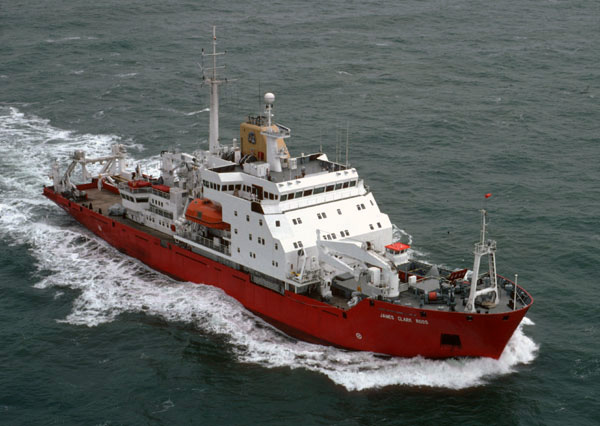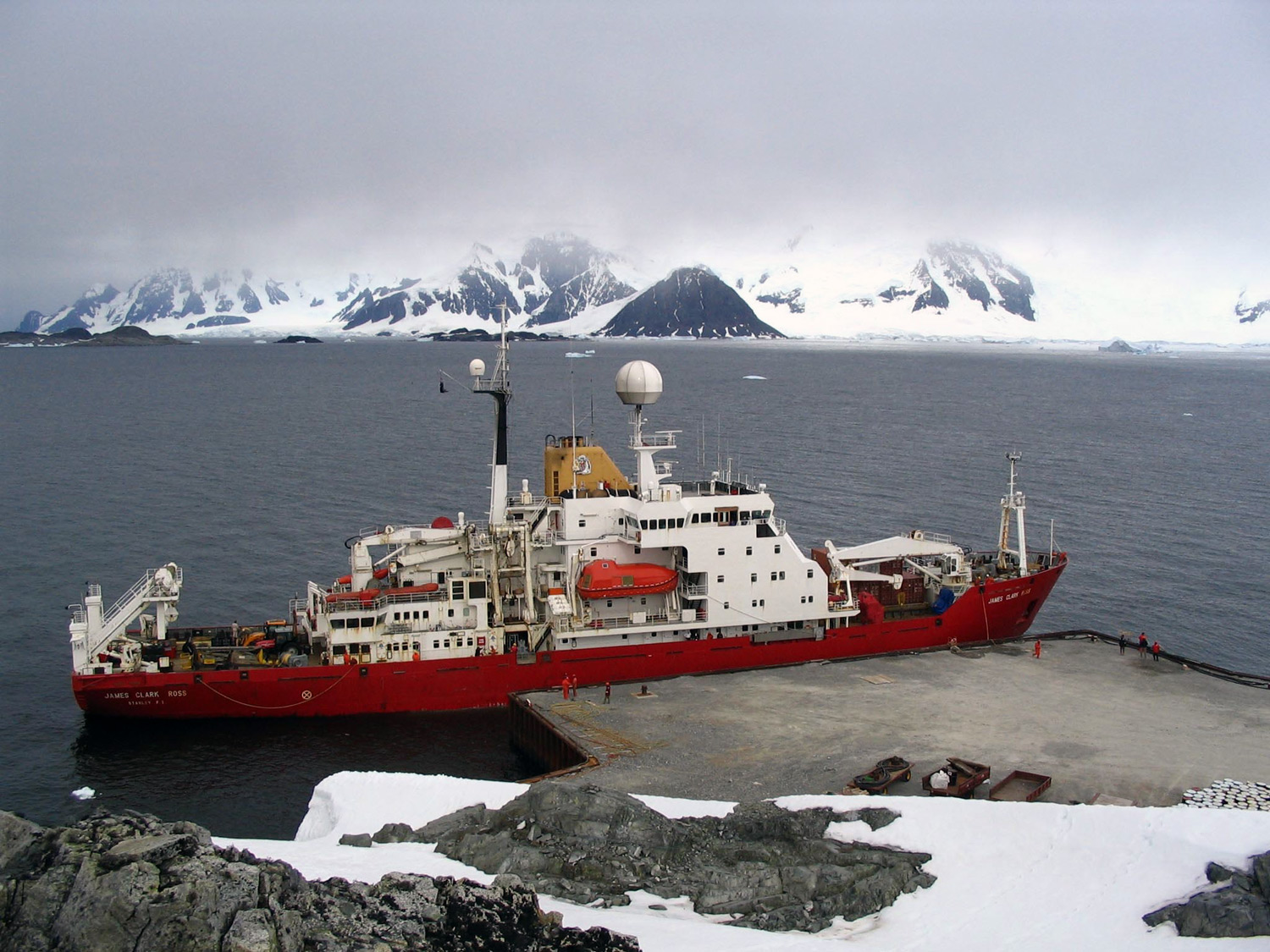RRS James Clark Ross
- Ice Strengthened Antarctic
Supply and Survey Ship
The James Clark Ross is an Antarctic supply and survey ship belonging to the British Antarctic Survey. She is ice strengthened, rather than being an ice breaker and represents a typical compromise solution for the resupply of Antarctic bases and for ship-based scientific work.
 Ice strengthened ships can't get through thick consolidated
sea ice, but that occurs very infrequently in the Antarctic
summer itinerary of a supply ship, so for most of the time,
simply avoiding the heavy stuff is sufficient.
Ice strengthened ships can't get through thick consolidated
sea ice, but that occurs very infrequently in the Antarctic
summer itinerary of a supply ship, so for most of the time,
simply avoiding the heavy stuff is sufficient.
The James Clark Ross was built at Swan Hunters shipyard Newcastle-Upon-Tyne and launched on the 1st of December 1990. She was built specifically for the British Antarctic Survey.
Each year she leaves the UK for the Antarctic laden with supplies for British Antarctic and sub-Antarctic bases. She stays in the southern ocean for the austral summer carrying out oceanographic and biological survey work in between supplying and re-supplying the bases and moving personnel around. Before the start of the Antarctic winter, she heads back to the UK again returning equipment, garbage to be disposed of and last but by no means least, returning Antarctic base members who have been away from the UK from just a few months to nearly two and a half years.
Specifications
Length: 99.04m, Breadth: 18.85m,
Draft: 6.4m
Displacement: 5,730 tonnes.
Propulsion: Diesel electric. Two diesel engines develop
a total of 8,500 shaft horsepower and drive a dynamo to
generate electricity to drive an electric motor attached
to the propeller. This gives the ability for the propeller
to still apply torque (turning force) when pushing against
ice or if slowed down. Under these circumstances a direct
drive diesel could just stop - and possibly suffer damage
in the process.
Cruising speed 12 knots (22kmh), ability to break through
first year ice 1m thick at 2 knots (3.6kmh) Ice knife positioned
behind the rudder to protect the rudder and propeller if
required to break ice when going in reverse.
Leading edge of the bow has a 150mm thick steel stem bar
surrounded by steel 26mm thick.
Special high quality low temperature steel is used throughout,
this thins to 21.5mm underneath and along the sides of the
ship.
![]()
10cm x 10cm weighs more than 1.6kg
![]()
10cm x 10cm weighs more than 2kg
"Ice belt" extends from 1m above to 1m below the
waterline all around the ship. This region has thicker metal
and has substantial internal ribs and frames to strengthen
it against being squeezed by any surrounding ice.
Very "clean" hull with nothing sticking out that might get
damaged or knocked off by the ice. This makes for a less
stable passage in open waters however.
Cooling system has a mechanism to prevent ice being sucked
in and causing a blockage. Used warmed water is sprayed
back over any ice blocks that may cause problems to help
free up the flow when moving through heavy ice.
Ability to pump water rapidly from one side of the ship
to the other causing a small roll that aids passage when
breaking ice.
Bow and stern thrusters to help steering in confined spaces,
can also be used to loosen ice at the bow and stern.
Powerful winches and an open "gate" at the stern for operating
trawl nets or towing various surveying devices behind the
ship.
Series of laboratories on board for analysis of water, biological
specimens or other oceanographic data collected.
Picture credits: Top - British Antarctic Survey | Bottom - RRS James Clark Ross at Rothera, Tom L C, Creative Commons 3.0, Share and Share Alike license, unported

